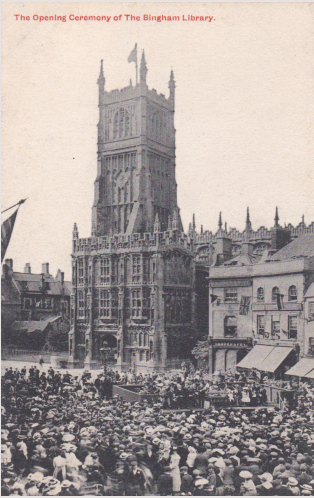
‘Gloucestershire History’
Between 1987 and 2011 in an annual series totalling 25 issues, ‘Gloucestershire History’ published the work of local historians from around the county, and from those further afield working on local studies. Produced and funded by the Local History Committee of the county-wide Gloucestershire Rural Community Council, this journal offered a home for material which might not have access to a more local outlet, or was too long for inclusion.
Some Cirencester-related material was published here, and via the good work of volunteers, especially Ray Wilson, to put the whole corpus on line, can now be studied in detail and at leisure via the following link:
https://gloshistory.org.uk/gloucestershire-history/
A useful checklist is followed on the Publications page by direct links to individual issues and their contents, set up to allow direct access to individual articles. Here are some which have direct relevance in or around Cirencester:
o The Bisley Path by Christopher Cox, in No 5, 1991, pp.2-5, a study of the old road network which ran from Cecily Hill through Cirencester Park on its route north and west of the town.
o An Old Cirencester Chapel by Fred James, in No 11, 1997 pp.2-9, which recorded the former Presbyterian/Unitarian chapel in Gosditch Street before its closure and later conversion to the Parish Centre which has given it a new lease of life. Dr James described it as ‘probably the oldest nonconformist place of worship in Cirencester in its most original 17th century form’.
o The Story of Trinity Mill, Bagendon by Joyce Barker edited by Richard Whorlow, in No 12, 1998, pp.2-7, which is a summary of the detailed long-term study which Joyce, a much-respected member of our Society for many years, undertook on her family home. The full record is deposited in Glos Archives.
o Noble Gifts: the legacy of Daniel George Bingham (1830-1913) to ‘my old native town’ of Cirencester by David & Linda Viner, in No 23, 2009, pp. 12-23, which describes the considerable philanthropy to the benefit of the town’s cultural life, which is still very evident today in the Bingham Library, Bingham Hall and the celebratory Bingham Gallery.
o ‘A moth-eaten rag’: Regimental Colours in Cirencester Parish Church by David Viner, in No 25, 2011, pp.18-28 which describes the group of Colours now preserved in Cirencester Parish Church, the best-preserved of which remain on display. David VinerEditor CAHS
